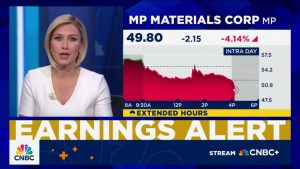Different investors each have their own risk tolerance. Some prefer to stick to proven blue-chip FTSE 100 shares, while others are fine investing in high-risk shares with yields to match.
But the flagship FTSE index has some pretty tasty yields even from large, well-known businesses. M&G, Legal & General (LSE: LGEN) and Aviva all yield above 7% at the moment, for example.
So if I had a monthly average passive income target of £1,000 and wanted to stick to investing in only FTSE 100 shares, here is how I would go about it.
Doing the maths
If I could achieve an average yield of 7%, £1,000 each month of dividend income would require a portfolio of around £171,430. By investing every month and compounding my dividends, I could hit that target in 11 years by investing £1,000 a month.
Putting in more would speed things up. For example, £1,600 a month would get me there in seven years. I could also put in less if I was willing to wait longer. Even £300 a month should get me to my passive income target, although I would need to wait 22 years.
Quality and value, first and foremost
But while I think I could earn 7% sticking to FTSE 100 shares in today’s market, I would not start by looking at yield.
Instead, I would hunt for fine businesses with attractive share prices. Only then would I look at their yield.
An example I think demonstrates this approach in action is a share I purchased for my portfolio this year, Legal & General.
With a large market likely to generate sizeable ongoing demand, Legal & General operates in a business area that can be very lucrative. Indeed, it has been lucrative for the firm over many years.
That is due to a number of reasons, such as a well-known brand, large base of existing customers and an increased strategic focus in recent years on retirement-linked financial products and services.
Whether future performance will be as strong as it has been before, time will tell. The company has announced plans to reduce its annual rate of dividend growth although, in fairness, it still expects the payout per share to grow annually and has also been splashing excess cash on share buybacks.
One risk I see is economic uncertainty leading policyholders to cash in, hurting profits at the firm. Profits after tax fell last year, for the second year in a row.
But as a long-term investor that takes the rough with the smooth, I remain upbeat about the outlook for the L&G dividend and plan to keep holding the share.
Putting the plan into action
Legal & General is only one of a number of FTSE 100 shares I own that I am using to build passive income streams.
By taking a structured approach with regular contributions to a share-dealing account or Stocks and Shares ISA, as I illustrated above, I hope I can earn money without working for it.
This post was originally published on Motley Fool





